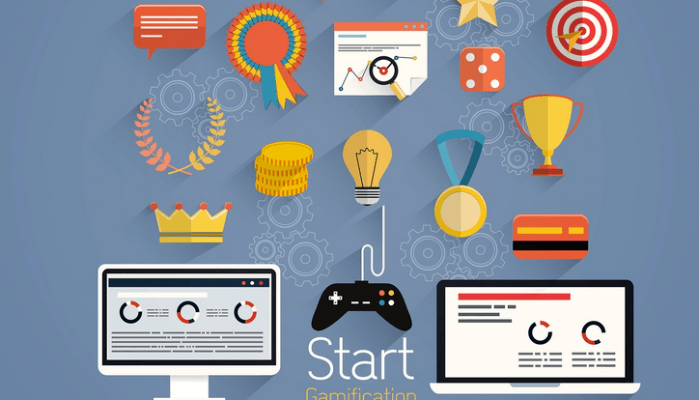How To Apply Gamification In The Classroom To Enhance Motivation
As a teacher in a public school in Thailand (English Program), I have read a lot about gamification. I haven’t noticed it before, but it is being used in our daily life in all sorts of ways. After a lot of reading, I tried to implement gamification in my classes. I would like to share with you this experience of applying gamification in the classroom; a very practical approach which costs nothing and the results are priceless.
Students today are digital natives; not like their digital immigrant teachers. On the plus side, this means that students interact with technology much better. On the down side, it means that they have very short spans of attention. This makes traditional teaching methods lacking the motivation incentive students may need to be motivated to learn.
As a science teacher, I have noticed that students lose their attention very quickly or seem to have no motivation to learn the curriculum's topics: That’s even before the mental challenges required by the science subject. After a lot of reading about young students’ habits and motivational methods, I have come across a new trend which kicked up all around the world into many fields such as business, industry, and marketing. Lately it has entered the education field and shows positive results.
What Is Gamification All About?
Many studies have looked into the games industry to find out why games are so addictive to both children and adults. Players may play hours upon hours whereas they are not willing to spend more than 15 minutes on doing homework or studying for exams. Same issues appear with adults who would rather play online games than do compulsory chores. Many people confuse gamification with playing games; these are two very different things. Playing a game is the actual action of playing. Gamification, on the other hand, looks into games’ mechanism. There are typical elements which are used in most games, such as:
- Challenge.
- Chance.
- Competition.
- Cooperation.
- Feedback.
- Rewards.
- Winning.
- Progression.
These game elements can be easily extracted from a game content and applied to almost any field. The idea is to take the engaging elements of gaming and implement them into the teaching process.
Grades Are Fun
No, they are not… but the education system looks at grades as an incentive to motivate students and as an evaluation scale. These days, however, grades seem to fail as a motivation factor as well as a proper evaluation scale (but I’ll discuss this issue another time). The next section will describe the implementation of gamification into my teaching of Science courses for grades 7, 8, and 9 to boost motivation.
Screw It, Let's Do It: How To Apply Gamification In The Classroom
Here are some of the elements I used to gamify my teaching and motivate my students:
- New system.
Instead of grades (max 100%), students got eXperience Points (XP). When a student gets a grade of 60%, he/she feels disappointed because it shows them that they didn’t make it to the top. In games, however, the player gain points according to his/her performance and achievements. Therefore, the only way is up. Instead of grades, they get points: 500XP for doing homework, up to 1000XP for a quiz, 300XP for participation in the class, etc. To the “grades” off their minds, each unit of the science subject is called level. In each level, a student needs to gain at least 11.000XP to continue to the next level, and up to 20.000XP to get the top score. As you can see, I chose big numbers to get as far as I can from the notorious 100 score. To make things even more interesting: If a student gains more than 20.000XP, he/she can use these points in the next level. This gives him/her a better starting point over the others, hence competition + rewards = motivation. Students can only gain points; not lose them, as done in games. This way, students count up from zero, which is motivating, rather than lose points from 100%, which is demotivating if the student doesn't get the full 100% mark. Any effort from the student can be rewarded by points: The more they try, the more the score increases. Almost the definition of motivation, isn’t it? At the end of the day, the score translates back to a grade (up to 100%). After all, we still need to report according to the education system rules… let's be realistic, shall we? However, as the year goes by, the students don’t feel like being graded; they enjoy the game-like atmosphere, the competition, and their high scores. - Competition.
To enhance competition I presented the scores as a visual leaderboard style as shown below. As you can see, three students got more than the maximum of 20.000 XP and the extra points will be their “bonus” points at the next level.
Conclusion
Most students reacted very positively toward the gamification of Science. Some students that had very low grades and performed poorly in previous years, got the chance to shine by doing small tasks and gain points which were not possible in the traditional grading system. For example, students who brought the books every week and showed responsibility were rewarded with XP. Students who helped their friends got a badge, which has high XP value that was added to their total score.
By viewing the leaderboard (progress bars), the students felt competitive and pushed themselves a bit harder than normally. By using game elements in education (NOT actual games), we can motivate our students to improve their achievements. By using a very practical implementation of gamification, anyone can increase motivation, create positive competition, more fun and hence, increase their performance.
What do you think? Have you tried gamification in your class or business? Please share your experiences.




